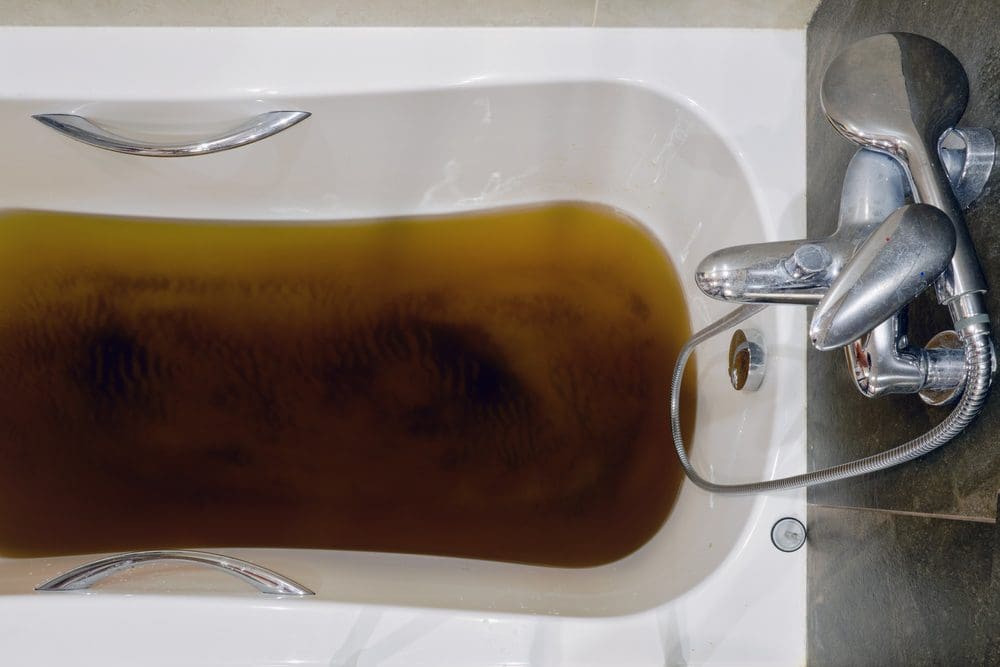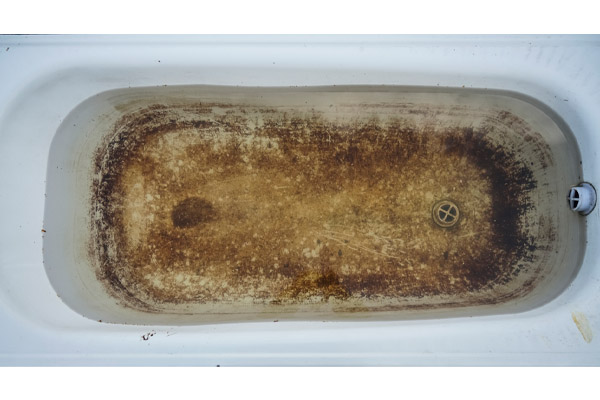Untangling the Causes of Effluent in the Bathtub
Untangling the Causes of Effluent in the Bathtub
Blog Article
Just about every person may have their personal ideas on the subject of Why sewage is coming up through your bathtub.

Sewer back-up in the bathtub can be a traumatic and unsanitary problem for any type of home owner. Not just is it bothersome, however it likewise presents significant wellness threats and indicates underlying concerns with the plumbing system. Understanding why sewer is turning up via the tub is vital for taking proper activity to deal with the issue efficiently.
Introduction to the Concern
Recognizing the Trouble
When sewage starts backing up into the bathtub, it's a clear sign of an issue with the drain system. The wastewater that ought to be flowing away from your home is instead locating its back right into your space, which can cause significant damages and health hazards.
Possible Causes
Several variables can add to sewage back-up in the bathtub. From blockages in the drain line to problems with the plumbing framework, determining the origin is necessary for finding a service.
Common Reasons for Sewage Backup
Clogs in the Sewage System Line
One of the most common sources of sewer backup is an obstruction in the sewer line. This can occur because of the build-up of particles, grease, or international items in the pipelines, protecting against proper circulation and creating sewage to back up into your bathtub.
Tree Root Invasion
Tree roots looking for moisture and nutrients can penetrate sewage system lines through small splits or joints. In time, these roots can expand and broaden, triggering considerable damages to the pipes and bring about sewage back-up issues.
Aging Framework
Older homes might have dated plumbing systems that are more at risk to corrosion, splits, and wear and tear. As pipelines age, they end up being extra prone to leaks and clogs, increasing the chance of sewer back-up cases.
Heavy Rainfall or Flooding
Throughout periods of heavy rainfall or flooding, the sewer system may become overloaded with excess water, creating backups and overflows. This can result in sewage supporting into bath tubs and other fixtures inside the home.
Wellness Threats Associated with Sewage Backup
Contamination of Water
Sewage back-up can contaminate the water supply in your house, positioning a major wellness risk to you and your family members. Exposure to contaminated water can bring about gastrointestinal problems, skin infections, and other diseases.
Spread of Illness
Sewage consists of hazardous microorganisms, infections, and bloodsuckers that can create a range of diseases, consisting of liver disease, cholera, and gastroenteritis. Entering into contact with sewer or polluted surfaces places you in jeopardy of infection.
Mold Development
Wetness from sewer backup can develop optimal conditions for mold and mildew development in your home. Mold spores can intensify respiratory system troubles and trigger allergies in delicate individuals, making punctual cleaning important.
Indications of Sewer Backup
Foul Odors
Unpleasant odors originating from drains or components, particularly in the washroom, might show sewer back-up problems. These odors are typically solid and persistent, indicating a problem that needs instant attention.
Slow Draining Fixtures
Tubs, sinks, and toilets that drain gradually or not at all could be experiencing sewage back-up. If several components are impacted simultaneously, it's likely that the problem originates from a common point, such as the main sewer line.
Gurgling Sounds
Weird gurgling or bubbling sounds originating from drains when water is running in other places in your home are a measure of air entraped in the plumbing system. This air build-up can result from sewer backup and must be examined immediately.
Immediate Actions to Take
Turning Off Water Supply
In the event of sewer backup, it's necessary to turn off the water system to avoid more contamination and damages. Find the main water shutoff valve in your home and closed it off until the problem can be fixed.
Speaking To an Expert Plumber
Handling sewer back-up is not a DIY job. Get in touch with a licensed plumber with experience in dealing with sewage-related issues to analyze the situation and do required repairs or cleanings.
Avoiding Contact with Infected Water
Till the sewer back-up is solved, avoid contact with contaminated water to avoid the spread of microorganisms and microorganisms. Use safety gear if you have to remain in the affected location and clean your hands completely afterward.
Preventive Measures
Normal Maintenance of Sewer Lines
Schedule routine inspections and upkeep of your sewer lines to identify and deal with potential problems prior to they rise right into significant troubles. This can include cleaning out debris, checking for tree root intrusion, and fixing any type of broken pipelines.
Setting Up Bayou Shutoffs
Consider setting up backwater valves in your plumbing system to prevent sewage from flowing back right into your home throughout durations of heavy rainfall or flooding. These shutoffs immediately close when water draws back up, shielding your building from contamination.
Appropriate Disposal of Household Waste
Avoid purging anything apart from toilet tissue and human waste down the toilet to avoid obstructions and blockages in the sewer line. Dispose of grease, oil, and various other household chemicals appropriately to lessen the danger of plumbing issues.
Cleaning Up After Sewer Backup
Disinfection Procedures
Thoroughly decontaminate and sterilize influenced areas after sewer backup to get rid of damaging microorganisms and prevent mold and mildew growth. Use appropriate cleansing products and protective gear to ensure risk-free and efficient cleaning.
Restoration of Affected Locations
Fix any type of damage to flooring, wall surfaces, or components triggered by sewage back-up. Relying on the degree of the damage, you may require to replace carpeting, drywall, or other materials to restore your home to its pre-loss condition.
Why Is Water Backing Up in My Bathtub When I Flush My Toilet?
What to do about a sewer line clog
First, don’t bother with plunging. No amount of plunging will dislodge the clog in a sewer line. The clog is too far away. Plungers are for clogs in the toilet itself, not the sewer line. Plus, the most likely causes of a sewer clog are:
Tree roots Flushed toys or feminine products Grease buildup Those items don’t move easily. And in the case of tree roots, the roots need to be cut out of the pipe and the pipe will need to be repaired.
You’ll need a closet auger. A closet auger is a type of plumber’s snake with a protective cover to keep from scratching the delicate porcelain toilet. If the clog is further down, you may need to remove the toilet or use one of your cleanouts to get to the clog.
We also recommend doing a video inspection of the drain to ensure that the cause of the clog has been completely removed. Otherwise, you could have the same problem again in a few days or weeks.
https://mspplumbingheatingair.com/blog/why-is-water-backing-up-in-my-bathtub-when-i-flush-my-toilet

I am just very intrigued by What to Do if Sewage Starts Coming Up Through Your Bathtub and I really hope you appreciated the new blog entry. Appreciated our posting? Please quickly share it. Let another person discover it. Thanks so much for going through it.
Click Here
Report this page